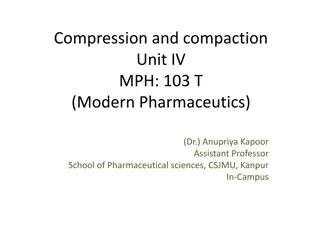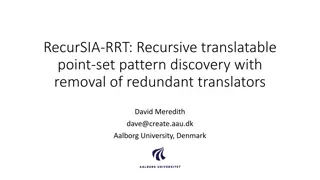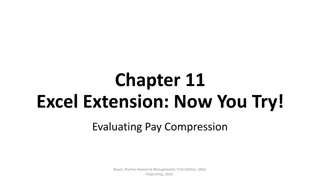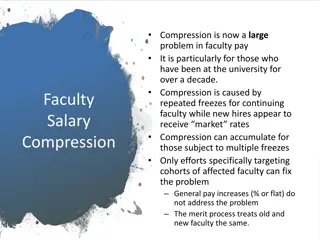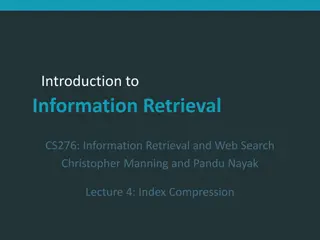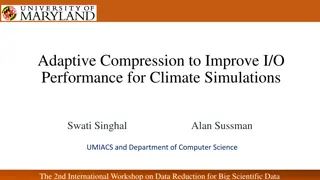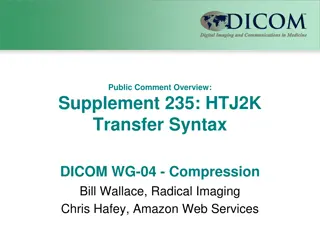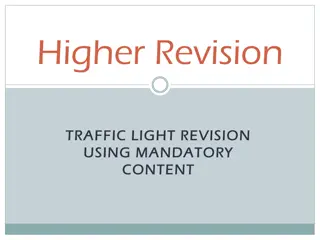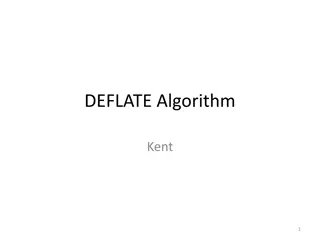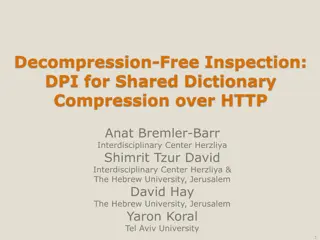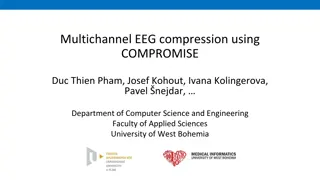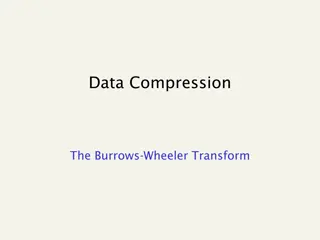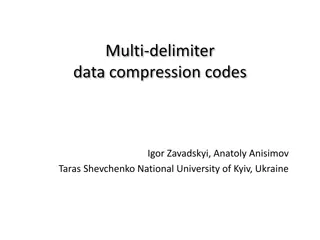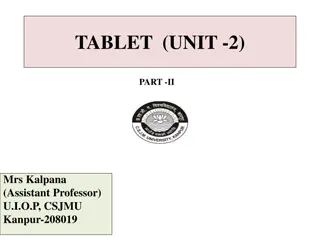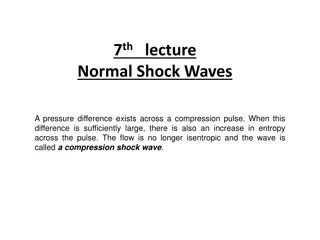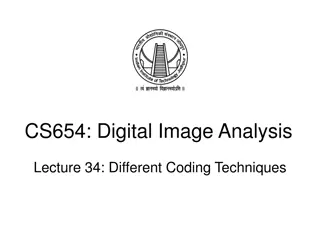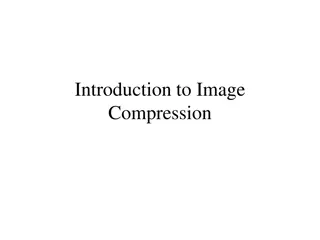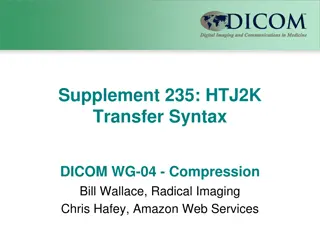Network Compression Techniques: Overview and Practical Issues
Various network compression techniques such as network pruning, knowledge distillation, and parameter quantization are discussed in this content. The importance of pruning redundant weights and neurons in over-parameterized networks is highlighted. Practical issues like weight pruning and neuron pruning are also explored, along with the effectiveness and challenges of implementing these techniques. The article emphasizes the need for network pruning over training a smaller network and provides insights into optimizing network efficiency and performance.
Download Presentation

Please find below an Image/Link to download the presentation.
The content on the website is provided AS IS for your information and personal use only. It may not be sold, licensed, or shared on other websites without obtaining consent from the author. Download presentation by click this link. If you encounter any issues during the download, it is possible that the publisher has removed the file from their server.
E N D
Presentation Transcript
NETWORK COMPRESSION Hung-yi Lee
Smaller Model Less parameters Deploying ML models in resource- constrained environments Lower latency, Privacy, etc.
Outline Network Pruning Knowledge Distillation Parameter Quantization Architecture Design Dynamic Computation We will not talk about hard-ware solution today.
Network can be pruned Networks are typically over-parameterized (there is significant redundant weights or neurons) Prune them! (NIPS, 1989)
Network Pruning Pre-trained Network Importance of a weight: large absolute values, life long Evaluate the Importance Importance of a neuron: the number of times it wasn t zero on a given data set Remove After pruning, the accuracy will drop (hopefully not too much) smaller Fine-tune Fine-tuning on training data for recover Don t prune too much at once, or the network won t recover. Small enough? Smaller Network
Network Pruning - Practical Issue Weight pruning The network architecture becomes irregular. Prune some weights 0 Hard to implement, hard to speedup
Network Pruning - Practical Issue Weight pruning https://arxiv.org/pdf/1608.03665.pdf
Network Pruning - Practical Issue Neuron pruning The network architecture is regular. Prune some neurons Easy to implement, easy to speedup
Why Pruning? How about simply train a smaller network? It is widely known that smaller network is more difficult to learn successfully. Larger network is easier to optimize? https://www.youtube.com/watch?v=_VuWvQU MQVk Lottery Ticket Hypothesis https://arxiv.org/abs/1803.03635
Why Pruning? Lottery Ticket Hypothesis Train Large Network Large Network Win! Train Sub- network Sub- network Sub- network Sub- network Win! Train
Why Pruning? Lottery Ticket Hypothesis Random init Again Original Random init Random init Pruned Trained Random Init weights Trained weight Another random Init weights
Deconstructing Lottery Tickets: Zeros, Signs, and the Supermask https://arxiv.org/abs/1905.01067 Why Pruning? Lottery Ticket Hypothesis Different pruning strategy sign-ificance of initial weights: Keeping the sign is critical +?, +?, - ?, +? 0.9, 3.1, -9.1, 8.5 Pruning weights from a network with random weights Weight Agnostic Neural Networks https://arxiv.org/abs/1906.04358
Why Pruning? https://arxiv.org/abs/1810.05270 Rethinking the Value of Network Pruning New random initialization, not original random initialization in Lottery Ticket Hypothesis Limitation of Lottery Ticket Hypothesis (small lr, unstructured)
Knowledge Distillation https://arxiv.org/pdf/1503.02531.pdf Do Deep Nets Really Need to be Deep? https://arxiv.org/pdf/1312.6184.pdf Knowledge Distillation Cross-entropy minimization Learning target 1 : 0.7, 7 : 0.2, 9 : 0.1 ? Teacher Net (Large) Student Net (Small) Providing the information that 1 is similar to 7
Knowledge Distillation https://arxiv.org/pdf/1503.02531.pdf Do Deep Nets Really Need to be Deep? https://arxiv.org/pdf/1312.6184.pdf Knowledge Distillation Cross-entropy minimization Learning target Ensemble Average many models 1 : 0.7, 7 : 0.2, 9 : 0.1 ? Student Net (Small) Model 1 Model 2 N Networks
Knowledge Distillation Temperature for softmax ??? ?? ???? ?? ??? ??/? ???? ??/? = = ?? ?? ? = 100 = 1 ?1= 100 ?1 = 0.56 ?1 ?1/? = 1 0 ?2= 10 ?2 = 0.23 ?2 ?2/? = 0.1 0 ?3= 1 ?3 = 0.21 ?3 ?3/? = 0.01
Parameter Quantization 1. Using less bits to represent a value 2. Weight clustering 0.5 1.3 4.3 -0.1 0.1 -0.2 -1.2 0.3 weights in a network 1.0 3.0 -0.4 0.1 -0.5 -0.1 -3.4 -5.0 Clustering
Parameter Quantization 1. Using less bits to represent a value 2. Weight clustering Table 0.5 1.3 4.3 -0.1 -0.4 0.1 -0.2 -1.2 0.3 weights in a network 0.4 1.0 3.0 -0.4 0.1 2.9 -0.5 -0.1 -3.4 -5.0 -4.2 Clustering Only needs 2 bits 3. Represent frequent clusters by less bits, represent rare clusters by more bits e.g. Huffman encoding
Binary Connect: https://arxiv.org/abs/1511.00363 Binary Network: https://arxiv.org/abs/1602.02830 XNOR-net: https://arxiv.org/abs/1603.05279 Binary Weights Your weights are always +1 or -1 Binary Connect network with binary weights Negative gradient (compute on binary weights) network with real value weights Update direction (compute on real weights)
Binary Weights https://arxiv.org/abs/1511.00363
Architecture Design Depthwise Separable Convolution
Review: Standard CNN 3 3 2 4 = 72 parameters Input feature map 2 channels
Depthwise Separable Convolution 1. Depthwise Convolution Filter number = Input channel number Each filter only considers one channel. The filters are ? ? matrices There is no interaction between channels.
Depthwise Separable Convolution 1. Depthwise Convolution 3 3 2 = 18 2. Pointwise Convolution 1 1 filter 2 4 = 8
? ? ? ?: number of input channels ?: number of output channels ? ? ? ? ?: kernel size ? ? ? ? ? ? + ? ? ? ? ? ? ? ? ? ? ? =1 1 ?+ ? ? ? ? ? ? ? ? + ? ? (? ? ?) ?
Low rank approximation M M U linear W K V N N K N N V K W U M M K < M,N Less parameters
18 inputs 18 inputs 9 inputs 9 inputs
To learn more SqueezeNet https://arxiv.org/abs/1602.07360 MobileNet https://arxiv.org/abs/1704.04861 ShuffleNet https://arxiv.org/abs/1707.01083 Xception https://arxiv.org/abs/1610.02357 GhostNet https://arxiv.org/abs/1911.11907
Dynamic Computation The network adjusts the computation it need. high/low battery Different devices Why don t we prepare a set of models?
Dynamic Depth ? = ?1+ ?2+ + ?? high battery Layer 2 Layer 1 Layer L ? ? ?? Extra Layer 2 Extra Layer 1 Does it work well? Multi-Scale Dense Network (MSDNet) ? ? low battery ?1 ?2 https://arxiv.org/abs /1703.09844 ? ?
Dynamic Width ? = ?1+ ?2+ ?3 ?2 ?1 ?3 ? ? ? Slimmable Neural Networks https://arxiv.org/abs/1812.08928
Computation based on Sample Difficulty Layer 2 Layer 1 Layer L ? Simple ? ? Stop! cat Layer 2 Layer 1 Layer L ? cat Mexican rolls Don t Stop! Mexican rolls Don t Stop! Difficult ? ? SkipNet: Learning Dynamic Routing in Convolutional Networks Runtime Neural Pruning BlockDrop: Dynamic Inference Paths in Residual Networks
Concluding Remarks Network Pruning Knowledge Distillation Parameter Quantization Architecture Design Dynamic Computation




